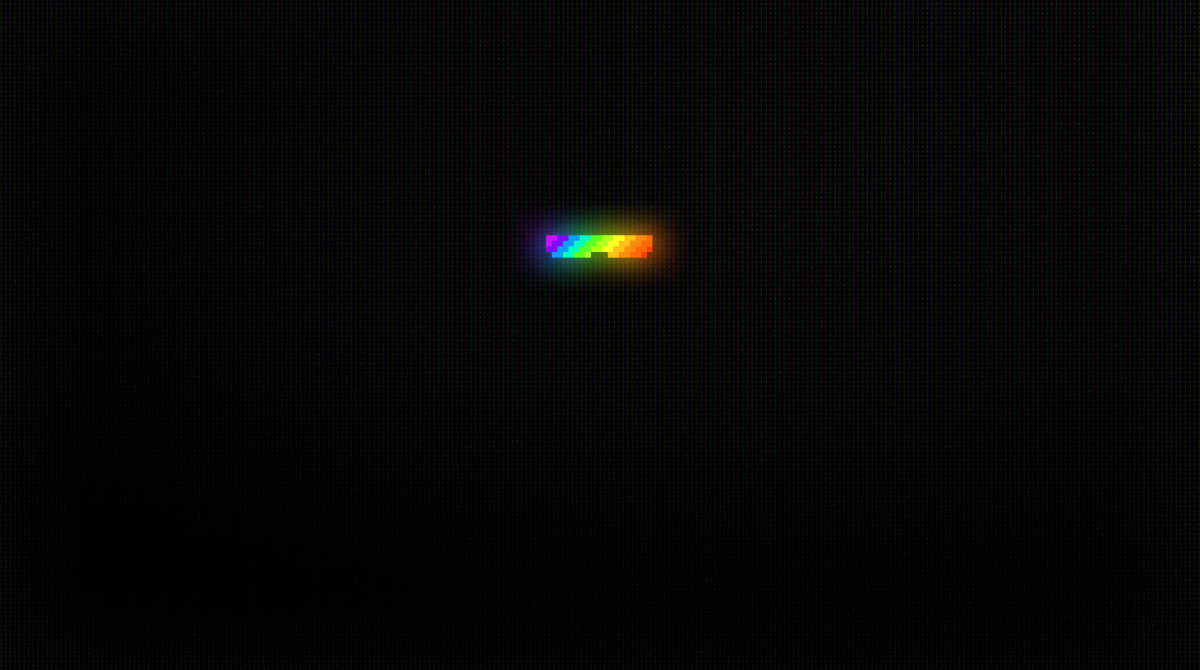In early 2021 the landscape of NFTs looked very different to what they do today. One project stood out as an early pioneer: CyberKongz, which merged collectible art with meaningful utility. Artist Myoo launched the project as a COVID-era side experiment. It grew organically in a landscape without hype campaigns, whitelists, or marketing budgets. Instead, a mix of sharp pixel art, innovative mechanics, and a special culture propelled CyberKongz to the top — setting the still-standing record floor price for a PFP NFT collection at 210 ETH.
Four years later, CyberKongz remains a force. On September 10, the project will enter a new chapter with the launch of $KONG, a rebrand of its $BANANA token. The new token brings a fresh vision, new mechanics, and meaning that resonates across the NFT space.
We sat down with Henry The Grape, CEO of CyberKongz, to talk about the ethos, learning moments, and future of Kongz. As Henry puts it, “You don’t need to own a Kong to be a Kong.”

OpenSea: Let’s start with you. Tell me a bit about your background and how you got involved in the space.
Henry: I kind of stumbled into web3. I’d been a casual crypto participant, but in 2020, I kept seeing articles about CryptoPunks. I didn’t get NFTs at all. Toward the end of that year, my brother said, “We need to dive in.” Around then, Pranksy was running his Christmas raffle for Punks. In January 2021, I bought into Pranksy’s NFT Boxes, which were very art-focused with OGs like XCOPY, Carini, and Coldie. It was a great learning experience…but honestly, it still hadn’t fully clicked yet.
OpenSea: What was the tipping point?
Henry: I’m in my 40s, former military, not super technical. I understood physical collectibles — I was a Pearl Jam poster guy — but I didn’t realize how many people would spend serious money on digital ones. What really clicked was the sense of community. When you leave the service you miss that bond. In web3, I felt it again, going through something new together. You meet people online, then IRL, and years later, you realize they’re real friends. That was the hook for me.
OpenSea: How did CyberKongz start?
Henry: Myoo, our founder and original artist, was a tattoo artist out of work during COVID. He’s a great pixel artist and was bored, so he made Kongz. No marketing, no Discord, no whitelist—1,000 Genesis Kongz on an OpenSea contract for 0.01 ETH. He had no idea there’d be any appetite. The community formed organically. I remember a couple hundred people in Discord as it spun up. There wasn’t a “team” at first, just people stepping in to help: a Solidity dev here, a UI designer there. That’s how the Council of Kongz formed.
From that came $BANANA, our ERC‑20 token, and the idea to use it to the next collection. Genesis Kongz yielded BANANA daily; holders used it to breed 4,000 Baby Kongz. Myoo didn’t want to “sell” Babies — he wanted a bigger community without doing a cash grab. Using a token emitted by the NFT to create the next collection was the lightning-in-a-bottle moment that put Kongz on the map in early ’21.

OpenSea: That mechanic ended up being influential.
Henry: You could argue it was the most influential mechanic introduced to NFTs. The mechanic itself was quite niche, but the overall concept of having a fungible token (ERC-20) paired to an NFT project completely changed the landscape of the space. If you look at the market now, pretty much every project has a token. Bored Ape Yacht Club with $APE; Pudgy Penguins with $PENGU — it’s been amazing to see, and that industry is now worth over 5 billion dollars. I guess you could say it’s pretty cool that we pioneered that.

OpenSea: What impact do you think Kongz had on the broader space?
Henry: Honestly, I think the impact has been huge. If you look at the space prior to Kongz, it was completely art focused and entirely different to what it is now. I think we were the first to introduce the concept of utility to NFTs and the expansive nature of a project. It was not normal at all before Baby Kongz to have multiple collections. It also wasn’t normal to have a roadmap. That is what we are most proud of, to contribute to the concept of really building out an NFT project.
It's a massive testament to others in the space that have taken this concept and applied it in different ways. Whether it is building out a project's IP to reach the masses, building a metaverse, or focusing on products — all of it has been an amazing uplift for the entire space.
On top of that, I think the culture of Kongz has really permeated through the NFT space. That degenerate spirit and wildness of Wall-Street-Kongz (our alpha channel) spread far and wide in the 2021 times and still remains to this day.
OpenSea: You’ve got a well-known line, “you don’t need to own a Kong to be a Kong.” What does that look like in practice?
Henry: Being a kong has never just been about the PFP. It's a mindset. It’s how you represent yourself in the space. We pride ourselves on being very respectful, giving, and knowledgeable.
If you look at the history of Kongz, we have a long history of trying to do good. Whether it was personally helping people in our discord, donating over $1.5m to charity, or open-source innovations to better the space. We truly believe we built a culture that is about lifting each other up.
If you were here in ‘21, you remember the days when a new project would mint and people would say ‘kongz are buying.’ That wasn’t about flexing, it was about respect. Respect earned because we never cared what PFPs sat in your wallet.
Being a Kong is bigger than the jpeg. It’s who you are in this space. With our next initiative, you can own $KONG to become a Kong — making the culture accessible for all.

OpenSea: There was a portion of our call about what you think Kongz did wrong—or at least what didn’t stick. Can we revisit that?
Henry: Sure, more than happy to. We tried the web2/IP route — merch, collabs. We did an adidas collab. We had a big toy deal with a Tokyo manufacturer called Nanolocks — the “Legos of Japan.” Those things weren’t impactful for our community. They weren’t bad; they just weren’t us. Our people are web3 degen learners — they want to understand new protocols, trading, DeFi loops, find early opportunities, and do it safely in a non‑intimidating room.
So we asked ourselves: are we an IP company? Not yet. It's a card that we can always play, but our specialty is community and culture. CyberKongz is the best place to learn, share alpha, access opportunities, and be early. That’s who we are. Once we embraced that, everything made more sense.
OpenSea: You also mentioned a tough period.
Henry: The SEC investigation was easily the most difficult period in CyberKongz history. When we were initially subpoena’d we had no idea how long and draining of a process it would be. We watched other projects continue on with their endeavours while we felt like we had four flat tires. It felt like an impossible period of time, and it dragged on for 27 months.
I think it would be hard for people to really understand the toll this took on the entire team. It wasn’t just the stress of dealing with the legal, but it was the inability to communicate with our community what was actually going on. When the SEC decided that they wanted $BANANA eliminated from our ecosystem, we knew we had to fight. It wasn’t just a fight for CyberKongz, but a fight for the greater web3 space. Who better to take on that fight than us? You couldn’t have scripted a more organic project. If we didn’t meet the standard of not being a security, who would? We geared up for the next phase of our legal battle, but ultimately the SEC closed their investigation. That breathed new life into what we’re doing, and we couldn’t be more excited to have those shackles off.
OpenSea: What’s next for CyberKongz?
Henry: The launch of $KONG. We couldn’t be more excited about this. As important as $BANANA has been for the space, the tokenomics, liquidity, and accessibility all had major issues. $KONG is a rebrand and upgrade.
$KONG is the brand liquidity layer that represents CyberKongz and NFT culture. It is a token for people that believe in the cultural significance of NFTs and the spirit that we as a brand represent.
$KONG will exist exclusively on Ethereum and is much more DeFi-focused instead of gaming-focused. We are integrating the token holistically into every part of our ecosystem designed in a way for a much more sustainable and healthy future.
TGE is on Wednesday September 10th and we are happy to announce that 2% of the supply will be airdropped to OpenSea users.
We also have much more coming regarding burn events, ecosystem updates, and product rollouts that align with our new vision. Pretty much everything can be seen on our new website: cyberkongz.com.
OpenSea: That’s a clear vision.
Henry: Yeah. It’s time for Kongz to be back on top. Not because we’re chasing a fleeting trend, but because we’re doubling down on what we do best — culture and community.






.avif)
.png)
.png)




.png)
.png)